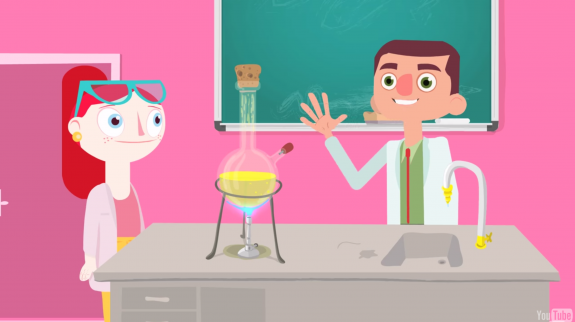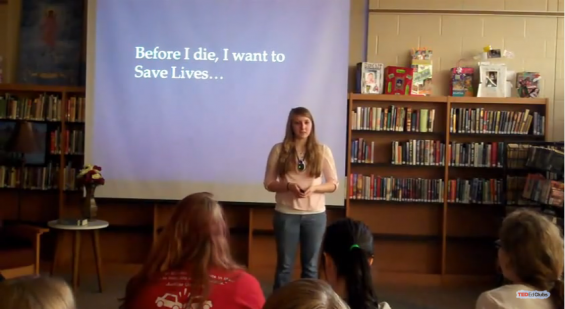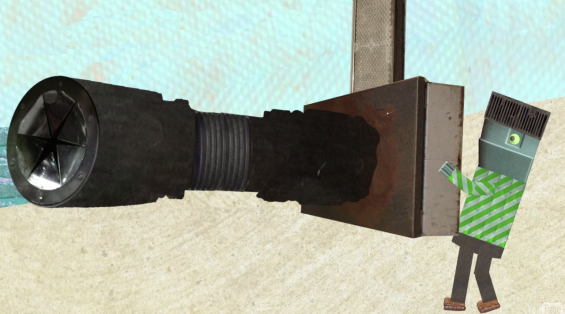
How to use TED-Ed in your chemistry classroom

Highland Park High School teacher Gordon Williamson uses TED-Ed Lessons extensively in his chemistry classroom to catalyze conversations and supplement his curriculum. Below, a snapshot of Gordon’s favorite lessons and how he chooses to wrap them into his units.
Unit 1: Introduction to Chemistry, Mathematical Concepts and Scientific Measurement
- What’s the difference between accuracy and precision?
“I use this lesson at the first of the year to help prepare students for chemistry lab. Students, typically, have never thought about these terms having different meanings and tend to use them interchangeably. Precision can be thought of as how repeatable how result can be obtained, where accuracy is a measure of how close a result is to an accepted value. Chemistry is often the first class where they are required to measure and record data with the correct precision and account for how precision might affect the accuracy of their experiment.”
Unit 2: Matter, Atomic Structure, and the Periodic Table
- The 2,400 year search for the atom
“This is one of my favorite lessons providing an excellent introduction to atomic theory in my chemistry class. It traces the development of modern atomic theory from it’s roots in ancient Greece and provides perspective regarding how quickly our model of the atom has improved just during the 19th and 20th century.”
- What is the universe made of?
- Just how small is an atom?
- Solving the puzzle of the periodic table
- The science of macaroni salad: What is a mixture?
Unit 3: Light and Electron Configuration
- Introduction to Light
- Particles and waves: The central mystery of quantum mechanics
Unit 4: Naming and Writing Chemical Compounds
Unit 5: Chemical Bonding and VSEPR Theory
- How atoms bond
“I use this lesson in chemistry to re-emphasize the nature of ionic and covalent bonding, which was previously discussed in lecture. The animation is very helpful is helping student visualize the process of bonding and the ideas associated with electronegativity and valence electrons and helps prepare them for a more in-depth discussion of chemical compounds.”
- What is the shape of a molecule?
Unit 6: Chemical Equations
Unit 7: Oxidation-Reduction Reactions
Unit 8: Moles, Percent Composition, and Empirical & Molecular Formulas
Unit 9: Stoichiometry and Hydrates
Unit 10: Gas Laws
- The history of the barometer
“I like this lesson as it encompasses many areas of science. Understanding pressure and its measurement is an important concept in all physical sciences. One of the most fundamental ways to grasp this concept is by understanding the operation of a barometer. This lesson provides a historical perspective of the development of the barometer while providing an excellent explanation of fluid forces and how they are used to measure atmospheric pressure. As a bonus, the lesson also encourages students not to be afraid to challenge long accepted scientific views.”
- How heavy is air?
- Describing the invisible properties of gas
Unit 11: Nuclear Chemistry and Radioactivity
Unit 12: Thermochemistry, Kinetics, and Heat Transfer
Unit 13: Water and Solutions
- Where did the Earth’s water come from?
- How do geckos defy gravity?
“From the title, it might seem that this lesson is not closely connected to chemistry. However, this is not the case. This lesson provides an excellent introduction to electronegativity and a great discussion of intermolecular forces, especially van der Waal forces. This is an especially good lesson when trying to associate principles of chemistry to other branches of science, in this case both biology and physics.”
- How polarity makes water act strangely
- Why does ice float in water?
- Why don’t oil and water mix?
Unit 14: Acids and Bases




I love it